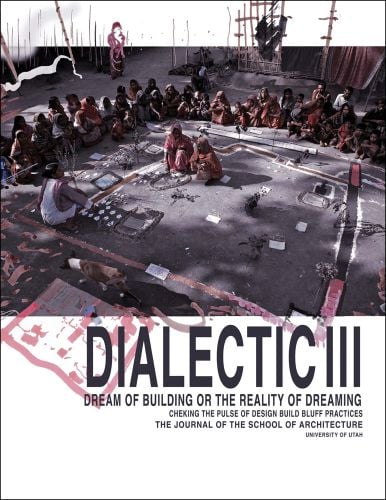
Dialectic III
Dream of Building or the Reality of Dreaming
The third issue of Dialectic focuses on the history, theory, and practice of design-build studio and non-profit design industry. Surely, these studios work on the margins. They are realised in geographies and neighbourhoods off the cultural grid. They take students away from the grounding certainties of home and school. They transport participants to a world incompatible with the accepted norms of their educational institutions. They confront them with the limitations of high-tech spectacles born of tourist economy for the vast majority of the world that lie at the heart of disciplinary imagination. They force participants to investigate the ordinary, the understated, and the invisible, born of necessity. Most of these programs invent projects paid for with soft funds and produce clients. They do so in communities too poor to be of interest to the real estate industry and too voiceless to be heard by their councillors. They teach design’s reliance on skilled labour. Contributing essays consider if this marginal practice has the strength to hold up a mirror to the centre. They evaluate both its powerful and toothless practices, and reflect on the value of this enterprise. Photo essays provide timelines and approaches to this pedagogic movement. Since these practices create a market for their goods in defiance to the logic of the mainstream marketplace, they impose very trying demands on the time, finances, and logistics of the schools, faculty, and organisations committed to them. Are there strategies and tactics that can ensure their sustainability and secure their future? These are some of the issues touched upon here.
- Publisher
- ORO Editions
- ISBN
- 9781941806937
- Published
- 21st Oct 2015
- Binding
- Paperback / softback
- Territory
- World excluding USA, Canada, Australasia & Asia (except Japan; China non-exclusive)
- Size
- 280 mm x 215 mm
- Pages
- 120 Pages
- Illustrations
- 200 color
- Name of series
- Dialectic
Distributed by ACC Art Books
Our Catalogues
Please log-in or create an account to see your recent items.